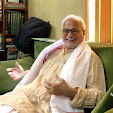- The first […] by making us go beyond interpretations of this or that thing or event toward an overall reading of the world.
- The second was to see the world as having as its own precondition a fundamental meaningfulness beyond itself.
- The third (after we had noted the possible moral effects of art in making us go beyond the limits of our present character) was that art might be regarded as a kind of epiphany of divine presence, divine light. […]
The arts reveal the human world, either as it actually is or as it ideally is. They express the creativity of man when the artist adds to the things of intrinsic worth in the world, or the art-appreciating public makes the artist’s vision of what he has made live again. The arts point to transcendence, not just the way the world as a whole is wonderful and presupposes a meaning greater than itself, but also by enacting divine presence sustaining the special density of meaning that art, literature, music can contain (pp. 145-146).
- First of all, Christ makes manifest or reveals what humanity is. “As the true Adam, he shows us the reality of what the human species should be like and on the Cross discloses the range and power of the evil which inhibits our being as the first Adam was meant to be, in God’s image and likeness” (p. 148). So Christ reveals what the postlapsarian world is like and (thankfully) what it ought to be like.
- Second, Christ’s redemptive work transcends nature “by bringing into being a further dimension of reality,” viz., salvation and “new resources of grace and life” (p. 148). In other words, just as art advances and elevates creation, so too does the work of Christ.
- Third, in Christ the meaning of the world as a whole is revealed and points to the “Father’s wonderful plan to bring about the nuptials of heaven and earth, the uncreated and the created, in the sacrificial joy of the Kingdom. He points to the source of the world in a pre-existing divine truth, […] Moreover, he enacts that truth-the truth which is the Holy Trinity-in his own person” (p. 148).
Though only the Son took on flesh, the Son is eternally “co-defined by the Father and the Holy Spirit.” Hence, “Jesus is always the Trinitarian Son, essentially related to the Father and the Spirit in his work on earth” (p. 148). In fact, the whole redeemed creation shall one day enter into the eternal dance of the Trinity, as captured in Rublev’s famous icon of the Trinity (p. 148).
The risen and ascended God-man is the true predestined goal of all creation. Here the capacity of artwork to be the vehicle of divine presence in the material form of words or sounds or shapes and colours is super-filled. Christ is, then the perfect art work in the sense of that reality in whom is realized those goals that all artistic making has as its explicit or implicit ends. Because he is infinite meaning, life and being perfectly synthesized with finite form, the cave-painters at Lascaux, or Hesiod penning his hymns, or Beethoven working on his last quartets, were all gesturing towards him through they realized it not (p. 148).

No comments:
Post a Comment